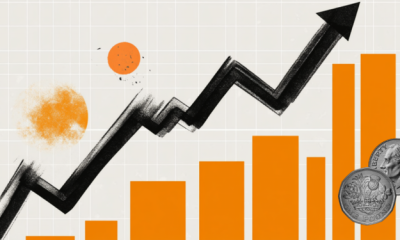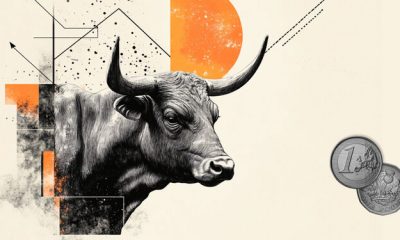

Metaverse
AI holds tantalising promise for the emerging world – Crypto News
New technology brings with it both the sweet hope of greater prosperity and the cruel fear of missing out. Satya Nadella, the boss of Microsoft, says he is haunted by the fact that the Industrial Revolution left behind India, his country of birth. (Indian manufacturers hardly enjoyed a level playing-field—Britain was then both their rival and their ruler.) Many technologies, such as online-education courses, have generated more hype than economic growth in the emerging world. Some people worry that generative artificial intelligence (AI), too, will disappoint the global south. The big winners so far seem to be a bunch of Western early adopters, as well as startups in San Francisco and America’s “magnificent seven” tech firms, which include Microsoft and have together added an astonishing $4.6trn to their market value since Chatgpt’s launch in November 2022.
Yet AI stands to transform lives in the emerging world, too. As it spreads, the technology could raise productivity and shrink gaps in human capital faster than many before it. People in developing countries need not be passive recipients of AI, but can shape it to suit their own needs. Most exciting of all, it could help income levels catch up with those in the rich world.
The promise of AI in developing countries is tantalising. As in the West, it will be a useful all-purpose tool for consumers and workers, making it easier to obtain and interpret information. Some jobs will go, but new ones will be created. Because emerging countries have fewer white-collar workers, the disruption and the gain to existing firms may be smaller than in the West. The IMF says that a fifth to a quarter of workers there are most exposed to replacement, compared with a third in rich countries.
But a potentially transformative benefit may come from better and more accessible public services. Developing economies have long been held back by a lack of educated, healthy workers. Primary-school teachers in India have twice as many pupils as their American counterparts, but are ill-equipped for the struggle. Doctors in Africa are scarce; properly trained ones are scarcer. Whole generations of children grow up badly schooled, in poor health and unable to fulfil their potential in an increasingly global labour market.
As our briefing this week sets out, policymakers and entrepreneurs around the world are exploring ways that ai can help. India is combining large language models with speech-recognition software to enable illiterate farmers to ask a bot how to apply for government loans. Pupils in Kenya will soon be asking a chatbot questions about their homework, and the chatbot will be tweaking and improving its lessons in response. Researchers in Brazil are testing a medical ai that helps undertrained primary-care workers treat patients. Medical data collected worldwide and fed into AIs could help improve diagnosis. If AI can make people in poorer countries healthier and better educated, it should in time also help them catch up with the rich world.
Pleasingly, these benefits could spread faster than earlier waves of technology. New technologies invented in the early 20th century took more than 50 years to reach most countries. By contrast, AI will spread through the gadget that many people across the emerging world already have, and many more soon will: the phone in their pockets. In time, chatbots will become much cheaper to provide and acquire.
Moreover, the technology can be tailored to local needs. So far there is little sign that AI is ruled by the winner-takes-all effects that benefited America’s social-media and internet-search firms. That means a variety of approaches could prosper. Some developers in India are already taking Western models and fine-tuning them with local data to provide a whizzy language-translation service, avoiding the heavy capital costs of model-building.
Another idea that is also taking off in the West is to build smaller, cheaper models of your own. A narrower set of capabilities, rather than the ability to get every bit of information under the sun, can suit specific needs just fine. A medical ai is unlikely to need to generate amusing limericks in the style of William Shakespeare, as ChatGPT does so successfully. This still requires computing power and bespoke data sets. But it could help adapt ai in more varied and useful ways.
Some countries are already harnessing ai. China’s prowess is second only to America’s, thanks to its tech know-how and the deep pockets of its internet giants. India’s outsourcing industry could be disrupted, as some back-office tasks are taken on by generative ai. But it is home to a vibrant startup scene, as well as millions of tech developers and a government that is keen to use ai to improve its digital infrastructure. These leave it well-placed to innovate and adapt. Countries in the Gulf, such as the United Arab Emirates and Saudi Arabia, are determined to build an ai industry as they shift from oil. They already have the capital and are importing the talent.
Each country will shape the technology in its own way. Chinese chatbots have been trained to keep off the subject of Xi Jinping; India’s developers are focused on lowering language barriers; the Gulf is building an Arabic large language model. Though the global south will not dislodge America’s crown, it could benefit widely from all this expertise.
Teaching AId
Plenty could yet go wrong, obviously. The technology is still evolving. Computing power could become too expensive; local data will need to be gathered and stored. Some practitioners may lack the ability to take advantage of the knowledge at their fingertips, or the incentive to try new things. Although countries in sub-Saharan Africa stand to gain the most from improvements to human capital and government services, the technology will spread more slowly there than elsewhere without better connectivity, governance and regulation.
The good news is that investments to speed AI’s diffusion will be richly rewarded. Much about the ai revolution is still uncertain, but there is no doubt that the technology will have many uses and that it will only get better. Emerging countries have suffered disappointments before. This time they have a wonderful opportunity—and the power to seize it.
© 2023, The Economist Newspaper Limited. All rights reserved.
From The Economist, published under licence. The original content can be found on www.economist.com
-
others1 week ago
David Schwartz To Step Down as Ripple CTO, Delivers Heartfelt Message to XRP Community – Crypto News
-

 Technology1 week ago
Technology1 week agoEngineers are chasing ₹30 lakh offers—but not from startups – Crypto News
-

 Technology1 week ago
Technology1 week agoEinride Raises $100 Million for Road Freight Technology Solutions – Crypto News
-
others1 week ago
Dogecoin Price Prediction – Chart Set-Up Highlights Perfect Buying Opportunity With Outflows Backing $0.45 – Crypto News
-

 Blockchain1 week ago
Blockchain1 week agoCiti Integrates Token Services Platform With Clearing Solution – Crypto News
-
Technology1 week ago
Fed’s Goolsbee Cites Inflation Worries in Case Against Further Rate Cuts – Crypto News
-

 Technology1 week ago
Technology1 week agoWhich ChatGPT features are restricted under parental controls introduced by OpenAI? – Crypto News
-
others1 week ago
Ireland AIB Manufacturing PMI increased to 51.8 in September from previous 51.6 – Crypto News
-

 Cryptocurrency1 week ago
Cryptocurrency1 week agoBitcoin’s rare September gains defy history: Data predicts a 50% Q4 rally to 170,000 dollars – Crypto News
-

 Cryptocurrency1 week ago
Cryptocurrency1 week agoBitcoin’s Cheat Code? 50 EMA Could Decide BTC’s Price in Q4 – Crypto News
-

 others1 week ago
others1 week agoGBP/USD rises as Fed rate cut bets grow, US shutdown risks loom – Crypto News
-
Technology1 week ago
Bloomberg Analyst Says XRP ETF Approval Odds Now 100% as Expert Eyes $33 Rally – Crypto News
-

 Blockchain2 days ago
Blockchain2 days agoIt’s About Trust as NYSE Owner, Polymarket Bet on Tokenization – Crypto News
-
Business1 week ago
Bitcoin Price Set to Rebound Ahead of US Government Shutdown, NFP Data – Crypto News
-
Technology1 week ago
Breaking: BNB Chain Account Hacked With Founder CZ Shown Promoting Meme Coin – Crypto News
-

 Technology1 week ago
Technology1 week agoUS SEC weighs tokenised stock trading on crypto exchanges – Crypto News
-

 Blockchain1 week ago
Blockchain1 week agoWatch These Key Bitcoin Metrics as BTC Price Prepares for ‘Big Move’ – Crypto News
-

 Technology1 week ago
Technology1 week agoNasdaq-listed Helius Medical Technologies rebrands as Solana Company – Crypto News
-

 Cryptocurrency1 week ago
Cryptocurrency1 week agoCrypto Market Prediction: Shiba Inu (SHIB) Moon Landing, Dogecoin (DOGE) Trapped in $0.23, XRP: Most Important Event for $3 – Crypto News
-

 Blockchain1 week ago
Blockchain1 week agoThe Bullish Pattern That Suggests New Highs – Crypto News
-

 Blockchain1 week ago
Blockchain1 week agoTrump Pulls Brian Quintenz Nomination for CFTC – Crypto News
-
Technology1 week ago
Crypto ETFs Approval Faces Uncertainty as Government Shutdown Looms, Bloomberg Analyst Says – Crypto News
-

 Cryptocurrency1 week ago
Cryptocurrency1 week agoBitcoin Bounces as Crypto Market Turns Green: Where Do Prices Go Next? – Crypto News
-
Cryptocurrency1 week ago
BREAKING: BlackRock Amends Bitcoin ETF (IBIT), Ethereum ETF (ETHA) Amid New Milestone – Crypto News
-

 Cryptocurrency1 week ago
Cryptocurrency1 week agoXPL, Not XRP: Why Are Whales Shoveling Ripple’s Rival? – Crypto News
-

 De-fi1 week ago
De-fi1 week agoCrypto Market Slips as U.S. Government Shutdown Looms – Crypto News
-

 Technology1 week ago
Technology1 week agoCAKE eyes 60% rally as PancakeSwap hits $772B trading all-time high – Crypto News
-

 De-fi1 week ago
De-fi1 week agoAndre Cronje’s Flying Tulip Raises $200 Million Ahead of ICO – Crypto News
-

 others1 week ago
others1 week agoEUR/GBP supported by dovish BoE tone and persistent UK fiscal headwinds – Crypto News
-

 Cryptocurrency1 week ago
Cryptocurrency1 week agoHorizen (ZEN) gains 12% to break above $7 – Crypto News
-
others1 week ago
Japan Tankan Large All Industry Capex climbed from previous 11.5% to 12.5% in 3Q – Crypto News
-

 Blockchain1 week ago
Blockchain1 week agoAnalyst Outlines Longevity And Bold $200 Target – Crypto News
-
others1 week ago
Fed’s Hammack Backs Restrictive Policy Over Rate Cuts Amid Inflation Concerns – Crypto News
-

 De-fi1 week ago
De-fi1 week agoHyperliquid’s Hypurr NFTs Settle at $55,000 Floor Amid Ecosystem Expansion – Crypto News
-
Business1 week ago
Crypto Stakeholders Push Back as Banks Seek Yield Ban Provision in CLARITY Act – Crypto News
-

 Technology1 week ago
Technology1 week agoGoogle Nano Banana trend: 50 AI prompts to transform men’s selfies into retro-golden Durga Puja portraits – Crypto News
-
others1 week ago
Japan Industrial Production (YoY) declined to -1.3% in August from previous -0.4% – Crypto News
-

 Technology1 week ago
Technology1 week agoChainlink and Swift allow banks to access blockchain through existing systems – Crypto News
-
Technology1 week ago
Breaking: BNB Chain Account Hacked With Founder CZ Shown Promoting Meme Coin – Crypto News
-
others1 week ago
Japan Foreign Investment in Japan Stocks rose from previous ¥-1747.5B to ¥-963.3B in September 26 – Crypto News
-
Business1 week ago
Legal Expert Breaks Down XRP’s Appeal as Ripple SWIFT Debate Heats Up – Crypto News
-

 Cryptocurrency1 week ago
Cryptocurrency1 week agoBitcoin Climbs Above $112K, But $125K Resistance Looms Large – Crypto News
-
Technology1 week ago
SEC Chair Paul Atkins Says Crypto Is Top Priority At SEC CFTC Roundtable – Crypto News
-

 Cryptocurrency1 week ago
Cryptocurrency1 week agoEthereum whales return to the market: Is ETH ready for $10K? – Crypto News
-

 Technology1 week ago
Technology1 week agoFTT price on the edge as FTX creditors brace for $1.6B payout on Sept. 30 – Crypto News
-

 Blockchain1 week ago
Blockchain1 week agoDX Terminal Tops NFT Sales Count in September as Base Dominates Top 10 – Crypto News
-

 Blockchain1 week ago
Blockchain1 week agoDX Terminal Tops NFT Sales Count in September as Base Dominates Top 10 – Crypto News
-

 Blockchain1 week ago
Blockchain1 week agoEthereum Founder Dumps Billions In These Meme Coins, Is This A Repeat Of Shiba Inu In 2021? – Crypto News
-
Technology1 week ago
Breaking: SEC Moves To Allow On-Chain Stock Trading Alongside Crypto Amid Tokenization Push – Crypto News
-

 Technology1 week ago
Technology1 week agoiQOO 15 key specifications leaked ahead of launch: Here’s what to expect – Crypto News
















